The books of the Bible are arranged in two major divisions: The Old Testament books, and the New Testament books. The difference between these two groups is when they were written. The Christian Bible contains 39 books that are all equally inspired by God.
Books of Bible Old and New Testament
The Bible is a collection of books that are considered sacred scriptures by a number of religions. The Bible is made up of the Old Testament and New Testament. There are many different kinds of books included in the Bible.
Old Testament Books
The Old Testament consists of 39 distinct books that many different authors from various backgrounds and locations wrote over a period of about 1,000 years. These books include histories, laws, poetry and prophecies. The first five books in the Old Testament are called the Pentateuch or Torah which means “Five Rolls” because they were written on five rolls or scrolls. These books include Genesis, Exodus, Leviticus, Numbers and Deuteronomy.
New Testament Books
The New Testament contains 27 separate books that were written by four authors during the last half century before Christ’s birth. These four authors were Matthew, Mark, Luke and John who wrote their own gospels while they were apostles with Jesus during his ministry on earth before he died on the cross for our sins according to Romans 5:8-10 (NIV).
The Bible is the most important book in the world. It contains many stories, but it is more than just a collection of stories; it is a collection of God’s words. He spoke these words through people who were prophets and apostles, and He wrote them down so we could learn from them.
In this article, we will be looking at some of the books of the Bible: Old Testament and New Testament.
Right here on Churchgists, you are privy to a litany of relevant information on how many books in the old and new testament, books of the bible list in order, how many books in the old testament, and so much more. Take out time to visit our Website for more information on similar topics.
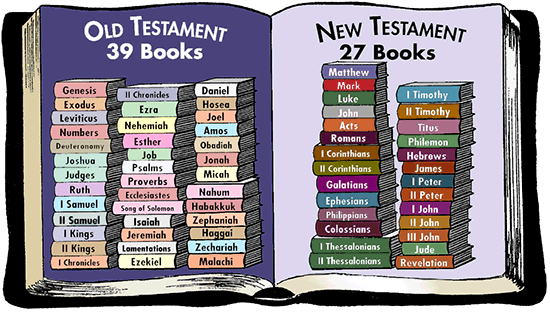
Books Of Bible Old And New Testament
“The Bible” is a compilation of various texts or “books” of different ages which together make up the central religious text of both Judaism and Christianity. It is probably the most quoted and the most widely distributed book in history, and many of the greatest writers in literature have been influenced by Biblical themes, motifs and images in one form or another.
Judaism generally recognizes a set of 24 canonical books known as the “Tanakh” or “Hebrew Bible”, which also essentially makes up the “Old Testament” of the Christian “Bible”. These books were primarily written in Biblical Hebrew with some small portions in Biblical Aramaic, at various dates between about the 9th Century and 4th Century BCE.
Christianity also includes a “New Testament”, a further 27 books which relate the life and teachings of Jesus and his disciples, written in Koine Greek in the 1st to 2nd Century CE.

The Bible is too huge to summarize in any detail, but here is a very abbreviated review of its contents:
The first 11 chapters of Genesis, the first book of “The Bible”, tell about God and the stories of the Creation, Adam and Eve, the Great Flood and Noah’s Ark, the Tower of Babel, etc. The remainder of Genesis tells the history of the Patriarchs: the Jews trace their ancestry to a man named Abraham through his son Isaac and his grandson Jacob (also called Israel), and Jacob’s children (the “Children of Israel”), especially Joseph; the Muslim Arabs also trace their ancestry to Abraham, through his son Ishmael.
The books of Exodus and Numbers tell the story of Moses, who lived hundreds of years after the Patriarchs, and who led the Hebrews out of captivity in Egypt. They wandered in the desert for forty years (during which time God gave the Ten Commandments to Moses) until a new generation would be ready to enter the Promised Land of Canaan. The books of Leviticus and Deuteronomy discuss the relationship between God and His chosen people, the Hebrews, and give details of the Law that regulated almost every aspect of Hebrew life.
The remainder of the books of the “Hebrew Bible” (the Christian “Old Testament”) are divided by Jews into the categories of Prophets and Writings, or, according to the Christian method of organization, into sections of Historical books, Wisdom books and Prophecy books.
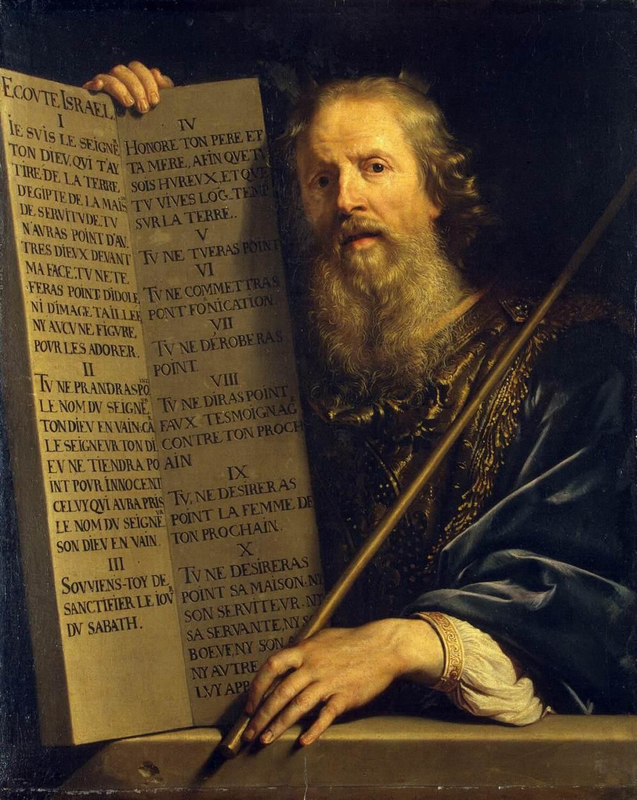
The Historical books (Joshua, Judges, Ruth, Samuel I and II, Kings I and II, Chronicles I and II, Ezra, Nehemiah, Tobit, Judith, Esther and Maccabees I and II) tell the history of Israel from the time of Moses until several hundred years before the time of Jesus. For a time, the tribes of Israel were ruled by a series of judges, and then came the monarchy of the kings Saul, David, Solomon and others. Israel was divided into two kingdoms and suffered a number of military defeats. Jerusalem was eventually destroyed and many captives were taken away to Babylon, although in time the people were allowed to return and rebuild Jerusalem and their civilization.
Of the Wisdom books, Psalms, Proverbs, Wisdom of Solomon and Sirach contain many sayings of practical wisdom to help live a happy, successful and holy life; Job and Ecclesiastes deal with the weightier issues of the meaning of life, the existence of evil and our relationship with God; and the Song of Solomon is a love song glorifying romantic love between a man and woman (although it is sometimes interpreted allegorically as a story about the love of God for Israel or the Church).
The Prophecy books (Isaiah, Jeremiah, Lamentations, Baruch, Ezekiel, Daniel, Hosea, Joel, Amos, Obadiah, Jonah, Micah, Nahum, Habakkuk, Zephaniah, Haggai, Zechariah and Malachi) make predictions of the future, or give special messages of instruction or warning from God. Except for Lamentations and Baruch, each of these books is named for one of the well-known Hebrew prophets (as well as several minor ones), who were called by God to give these predictions, messages and warnings to kings and other leaders and to the people in general.
The four Gospels of the “New Testament” tell of the birth, life, ministry, teachings, death and resurrection of Jesus. Matthew, Mark and Luke are very similar, but the Gospel of John is quite different, being much more of a spiritual and theological work, although it also relates many of the same events as the other three Gospels. The Acts of the Apostles is a sort of sequel to the Gospel of Luke, written by the same author, and tells the history of the first 30 years of the Christian Church, mostly centered on the apostles Peter and Paul who were the preeminent leaders of early Christianity.
Most of the rests of the “New Testament” consists of letters (also known as Epistles), many of them traditionally attributed to the apostle Paul, to various Christian communities, instructing and encouraging them in the faith and addressing specific problems and disputes that had arisen in those communities. Many of the beliefs and practices of Christianity originated from Paul’s teachings in his letters to the Romans, Corinthians, Galatians, Ephesians, Philippians, Colossians, Thessalonians and Hebrews, and to Timothy, Titus and Philemon. The other Epistles (by James, Peter, John and Jude) were also written to encourage, instruct and correct the early Christians, and to encourage them to put their faith and trust in Christ and to put that faith into action through Christian love, kindness and respect for all people.

The Book of Revelation (also known as the Apocalypse) is also a letter of sorts, written by a man named John (possiby the apostle John), but it is in the form of apocalyptic literature, which tells a story largely through dramatic symbols, images and numbers. Revelation seeks to offer comfort and encouragement to Christians of all ages that God is firmly in control, and that, when the time is right, the forces of evil that seem to dominate our world will be utterly destroyed, and God’s eternal kingdom will come into its fulfillment.
The 24 canonical books of the “Tanakh” or “Hebrew Bible” can be split into three main parts:
- “Torah” (“Teaching”, also known as the “Pentateuch” or “Five Books of Moses”): 1. Genesis, 2. Exodus, 3. Leviticus, 4. Numbers, 5. Deuteronomy.
- “Nevi’im” (“Prophets”): 6. Joshua, 7. Judges, 8. Samuel I and II, 9. Kings I and II, 10. Isaiah, 11. Jeremiah, 12. Ezekiel, 13. Twelve Minor Prophets (Hosea, Joel, Amos, Obadiah, Jonah, Micah, Nahum, Habakkuk, Zephaniah, Haggai, Zechariah and Malachi).
- “Ketuvim” (“Writings”): 14. Psalms, 15. Proverbs, 16. Job, 17. Song of Songs (or Song of Solomon), 18. Ruth, 19. Lamentations, 20. Ecclesiastes, 21. Esther, 22. Daniel, 23. Ezra (including Nehemiah), 24. Chronicles I and II.
The Christian “Old Testament” is the collection of books written prior to the life of Jesus but accepted by Christians as scripture, and is broadly speaking the same as the “Hebrew Bible” as listed above (39 books in total when split, and usually in a different order). Some denominations also incorporate additional books into their canons. For example, the Roman Catholic Church also recognizes the following biblical apocrypha or deuterocanonical books: Tobit, Judith, Maccabees I and II, Wisdom of Solomon, Sirach (also called Ecclesiasticus), Baruch, and some Greek additions to Esther and Daniel.
The Christian Bible also includes the “New Testament”, which relates the life and teachings of Jesus, the letters of the Apostle Paul and other disciples to the early church, and the Book of Revelation. This accounts for a further 27 books, as follows:
- The Gospels (Matthew, Mark, Luke, John).
- Acts of the Apostles.
- St. Paul’s Epistles (Romans, Corinthians I and II, Galatians, Ephesians, Philippians, Colossians, Thessalonians I and II, Timothy I and II, Titus, Philemon, Hebrews).
- Other Epistles (James, Peter I and II, John I, II and III, Jude).
- Revelation (also known as the Apocalypse).
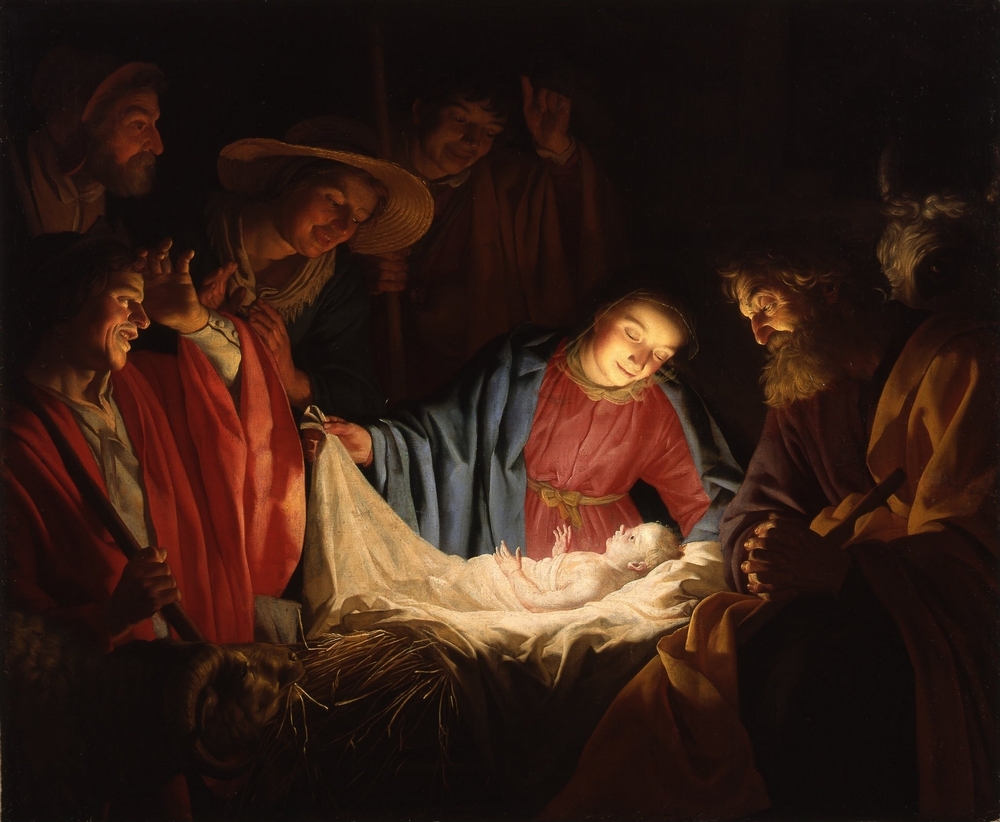
The “Hebrew Bible” was probably canonized in three stages: the “Torah” before the Babylonian Exile of the 6th Century BCE, the “Nevi’im” by the time of the Syrian persecution of the Jews (around 167 BCE), and the “Ketuvim” shortly after 70 CE. Around this time, they listed their own recognized scriptures in a closed “canon”, and excluded both Christian and other Jewish writings considered by them to be “apocryphal”.
The primary biblical text for early Christians was the “Septuagint”, the Greek translation of the “Hebrew Bible”, although, even in antiquity, translations were also made into Syriac, Coptic, Ge’ez and Latin, among other languages. However, somewhat different lists of accepted works continued to develop in antiquity and, in the fourth century, a series of Synods or church councils (notably the Council of Rome in 382 CE and the Synod of Hippo in 393 CE) produced a definitive list of texts which resulted in the current 46 book canon of the “Old Testament” and the 27 book canon of the “New Testament” recognized by Catholics today. Around 400 CE, St. Jerome produced the “Vulgate” Latin edition of “The Bible” in accord with the rulings of the earlier Synods and, at the Council of Trent in 1546, this was declared by the Catholic Church to be the only authentic and official Bible in the Latin rite.
During the Protestant Reformation of the 16th Century, however, Protestant denominations began to exclude those apocryphal or deuterocanonical “Old Testament” texts added by the early Catholic church, effectively paring it back to the contents of the “Hebrew Bible”. Both Catholics and Protestants use the same 27 book “New Testament” canon.
The books of the “Old Testament” were primarily written in Biblical Hebrew, with some small portions (particularly the books of Daniel and Ezra) in Biblical Aramaic, at various unconfirmed dates between about the 9th Century and 4th Century BCE. The books of the “New Testament”, were written in Koine Greek (the common street language of the time, as opposed to the more literary Classical Greek), and can be more accurately dated to the 1st to 2nd Century CE.
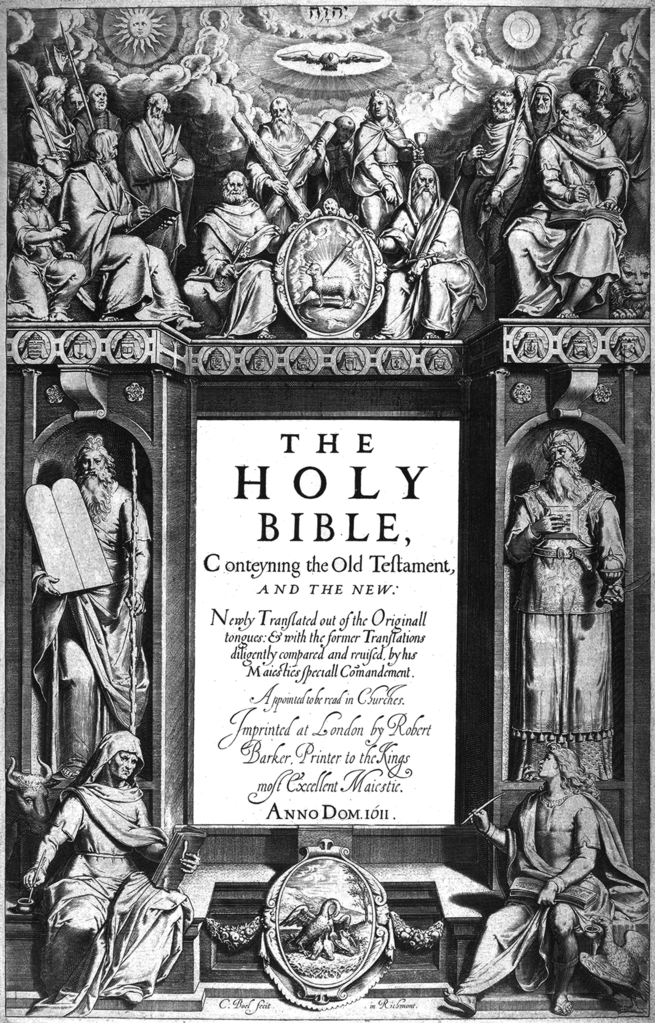
The actual individual authors of the books of “The Bible” are unknown.
The traditional view that the books of the “Torah” were written by Moses himself came under sporadic criticism from medieval scholars, and the modern “documentary hypothesis” suggests that it was actually written by many different people at different times, generally long after the events described. This views “The Bible” more as a body of literature than as a work of history, believing that the historical value of the text lies not in its account of the events that it describes, but in what critics can infer about the times in which the authors lived. Although biblical archaeology has confirmed the existence of many of the people, places and events mentioned in “The Bible”, many critical scholars have argued that “The Bible” should be read not as an accurate historical document, but rather as a work of literature and theology that often draws on historical events (as well as on non-Hebrew mythology) as primary source material.
Most Christian denominations teach that “The Bible” itself has an overarching message, around which Christian theology has been built over the centuries. Many Christians, Muslims and Jews regard “The Bible as inspired by God yet written by a variety of imperfect men over hundreds of years. Other “Bible-believing” Christians, however, regard both the “New Testament” and “Old Testament” as the undiluted Word of God, spoken by God and written down in its perfect form by humans. Still others hold the Biblical infallibility perspective, that “The Bible” is free from error in spiritual, but not necessarily in scientific, matters.
Many other non-religious readers, however, view “The Bible” solely as literature, and as a wellspring of myths and fables, although there is much debate as to the real literary merits of “The Bible”. Even St. Augustine, in the late 4th Century CE, confessed that biblical style exhibits “the lowest of language” and had seemed to him, at least before his conversion, “unworthy of comparison with the dignity of Cicero”. Biblical narrative in particular (as opposed to biblical poetry) tends to work with a very limited vocabulary and consistently avoids metaphors and other sorts of figurative language, evincing a drastically stripped-down manner of storytelling that can seem the very antithesis of style (although it has been argued that the original Hebrew – as opposed to the rather stilted Latin translation – does indeed have “style”).
“The Bible” includes both prose and poetry. The vast majority is written in prose, incorporating such prose features as plot, character, dialogue and timing, and prose is the form generally used when telling stories about people and historical events. However, poetry is also used extensively throughout “The Bible”, particularly in the books of Job, Psalms, Proverbs, Ecclesiastes, Lamentations and the Song of Songs. Certain books are written completely in poetic form and, according to some critics, up to a third of the “Old Testament” is poetry. Much of the poetry in the “Old Testament” can be described as ancient Hebrew poetry, which is marked by a literary feature called parallelism which features the repetition or reinforcement of a single idea in successive lines of poetry. It also employs features common to modern poetry, such as word plays, metaphors, rhymes and metre to communicate its message.
Beyond these two main categories, though, “The Bible” includes a large number of specific types of literature (some expressed in prose and others in poetry), including laws, historical prose, psalms, songs, wisdom, proverbs, biography, dramatic, letters and apocalyptic, as well shorter sections of prayers, parables, prophecy and genealogies or family lists.
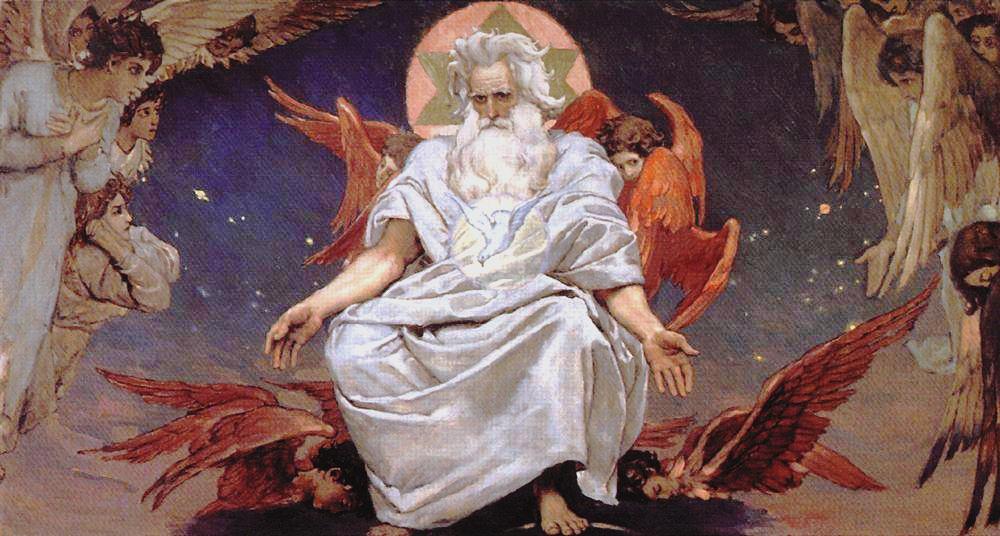
Despite the diversity of the books of “The Bible” and their separation in time, there are several unifying themes that run through both the “Old Testament” and the “New Testament”: that there is only one true God, who created all that is the universe and takes an active, ongoing and loving role in its maintenance; that God loves his people of all races, nationalities and religions, and seeks their love in return; that God created men and women with the power to choose between good and evil, and we are called to do good by serving God and respecting our fellow human beings of the world, while evil is a constant temptation that we must do our best to resist; that God seeks the salvation of all people from the power of sin and evil, and has intervened directly in human affairs (as well as sending the prophets and, ultimately, his son Jesus) to help us with that salvation.
The first complete English translation of “The Bible”was that of John Wycliffe in 1382, but the Authorized King James Version of 1611 is often considered to be the best English translation from a literary perspective, and indeed some consider it to be among the greatest literature in the English language. It was produced during a particularly fertile period for English literature (within the lives of Shakespeare, Jonson, Webster, et al), but also a period when religion had become very politicized. William Tyndale had been executed in 1536 for his early Protestant translation, although his work then became a major source for the King James Version. The work was accomplished by a committee of fifty scholars and clerics, working in six teams between 1604 and 1611. No Roman Catholics were invited to participate, although the 1582 English translation of the Catholic “New Testament” was one of the bibles used as a source.
books of the bible list in order
What Are the 46 Books of the Old Testament in Order?
The Hebrew Scriptures
Genesis
Exodus
Leviticus
Numbers
Deuteronomy
Joshua
Judges
Ruth
1 Samuel
2 Samuel
1 Kings
2 Kings
1 Chronicles
2 Chronicles
Ezra
Nehemiah
Esther
Job
Psalms
Proverbs
Ecclesiastes
Song of Solomon (or Song of Songs)
Isaiah
Jeremiah
Lamentations
Ezekiel
Daniel
Hosea
Joel
Amos
Obadiah
Jonah
Micah
Nahum
Habakkuk
Zephaniah
Haggai
Zechariah
Malachi
What Are the Books of the New Testament in Order?
Matthew
Mark
Luke
John
Acts of the Apostles
Romans
1 Corinthians
2 Corinthians
Galatians
Ephesians
Philippians
Colossians
1 Thessalonians
2 Thessalonians
1 Timothy
2 Timothy
Titus
Philemon
Hebrews
James
1 Peter
2 Peter
1 John
2 John
3 John
Jude
Revelation